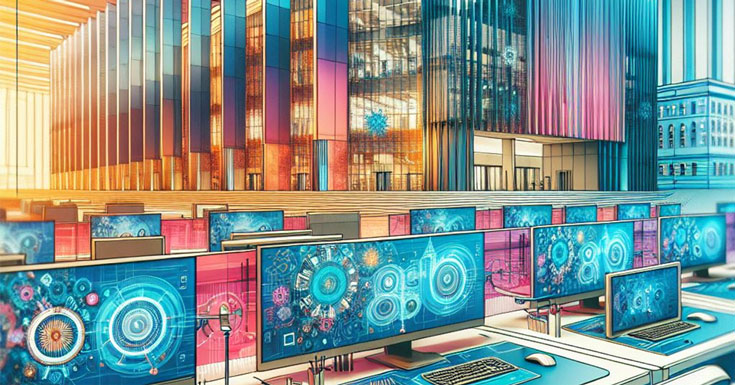Enhancing Student Experiences Through Intuitive Digital Interfaces
Junior Analyst

During my time as a student on campus, I reflected on how technology can either elevate or hinder the quality of students’ daily experiences. Technology plays an integral role in students’ lives, from accessing assignments and lectures in learning management systems to reviewing dining hall and event calendars to communicating with professors and advisors via email and advising portals. What are you doing to ensure your student-facing technology supports an optimal educational journey?
As a student, I often interacted with numerous interfaces. While some were clunky and time-consuming, causing frustration as I tried to navigate them, others were effortless and efficient.
I think of a tool I frequently used as a student: Quizlet, a website and mobile app where I could create digital flashcards to study for exams and play different games to test my memory and understanding. What I appreciated about Quizlet was its ease of use. I could log into my account, create a flashcard set, or find the latest flashcards I created, start a practice test, and study. I did not have to extensively search for what I needed; everything I needed to access was easily accessible from one page. This seamless and intuitive design significantly enhanced my study experience.
This raises an important question: what does it mean to create a modern, intuitive experience for students at your institution?
To answer this question, let’s start with some key considerations. Evaluating the intuitiveness of your digital interfaces is crucial. Consider these factors as you design and operate your digital student environment:
- How intuitive is your institution’s digital experience?
- How long does it take for students to find what they need?
- Are the most frequently used features easily accessible?
- Is the navigation straightforward and user-friendly?
When students experience an intuitive and accessible environment, they are more willing to continue using the tools provided by the institution. What is your strategy to ensure students have a seamless and effective digital experience?
Bottom Line
Institutions must continually evaluate and upgrade their offerings to meet student expectations for an intuitive and accessible digital experience. Once these expectations are understood, institutions can implement targeted improvements to their digital interfaces, ensuring that technology meets and exceeds students’ needs. Creating a campus environment that students are eager to be a part of, with readily available and accessible tools that enhance their educational journey, will empower them to maximize the technology. Your students will thank you through improved retention as they are more likely to stay and thrive in an environment that supports their needs.
You May Also Like:
- Top Predictions for Education in 2025: Building Institutional Agility and Resiliency
- Shining Through the Fog: People and Purpose in Higher Education
- [Webinar] Discover What Sets D2L and Blackboard Apart on the 2024 LMS StarChart
Originally posted by Serena Malhotra on LinkedIn. Be sure to follow her there to catch all her great industry insights.
Categories
Share Article:

Other Posts From this Author:
© Copyright 2025, The Tambellini Group. All Rights Reserved.